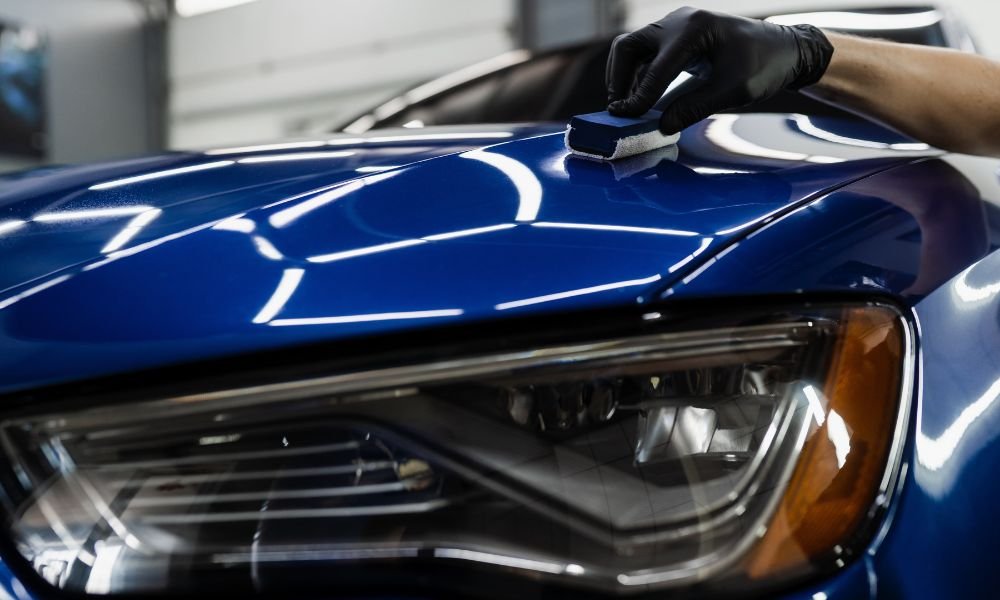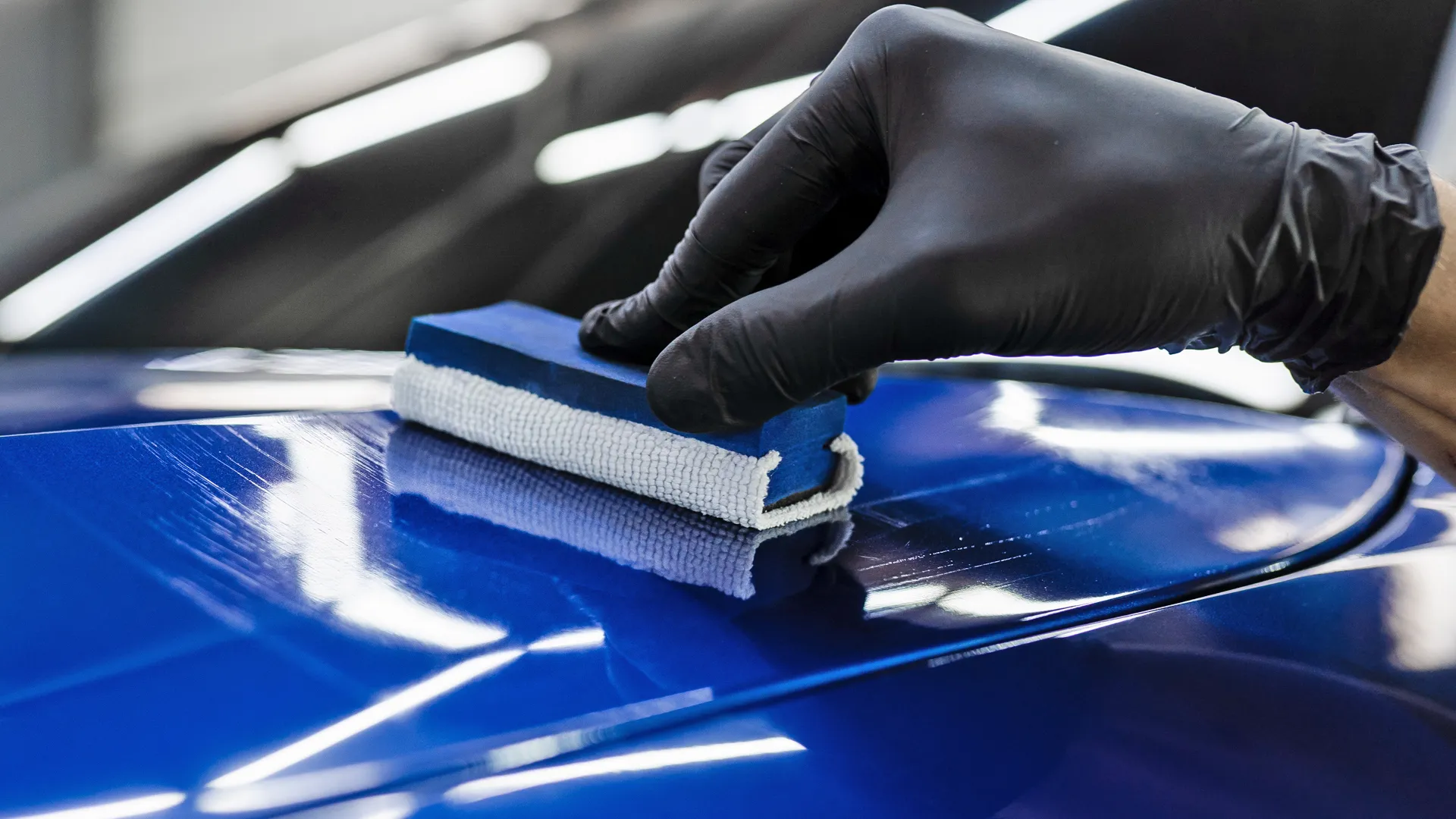What Makes Ceramic Coating the Ultimate Choice for Car Paint Protection?
Wiki Article
Ceramic Coating vs. Traditional Wax: Which Uses Better Protection?
The argument in between ceramic coating and conventional wax for lorry protection is one that advantages cautious examination, specifically in terms of longevity, resistance to ecological variables, and total maintenance needs. While ceramic layers promise prolonged long life and exceptional defense versus a variety of hazards, conventional wax might appeal to those seeking an extra economical, albeit temporary, option. As we discover the nuances of each choice, the ramifications of your selection can have long-term impacts on your vehicle's look and upkeep routine. What aspects should influence your choice?Overview of Ceramic Covering
Ceramic finishing has actually gotten substantial appeal amongst vehicle lovers and experts alike for its sophisticated safety qualities. This cutting-edge service consists of a fluid polymer that chemically bonds to the lorry's manufacturing facility paint, forming a durable layer of security. Unlike typical wax, which generally lasts for a couple of weeks to months, ceramic finishings can provide durable security for several years, depending on the item used and application approach.
While the initial price of ceramic layer may be greater than that of traditional wax, the lasting advantages, including resilience and decreased maintenance frequency, typically justify the financial investment. As vehicle innovation continues to evolve, ceramic coverings have emerged as a recommended choice for those seeking ideal defense and longevity for their lorries.
Review of Standard Wax
The appeal of traditional wax exists in its simpleness and simplicity of usage, making it a popular option among automobile owners looking for to improve their vehicle's look and provide a standard level of defense. Normally stemmed from natural carnauba or synthetic polymers, standard wax develops a slim safety layer over the paintwork. The application procedure is uncomplicated, typically involving a basic rubbing with a microfiber towel, making it easily accessible to both amateur and knowledgeable individuals.Traditional wax products are readily available in various formulations, each developed to accommodate specific needs, such as enhancing luster or giving water beading. The adaptability of wax enables use on different surface areas, consisting of paint, glass, and even plastic trim. While the application can be done by hand or machine, the secret is to make certain a clean surface area for optimum adhesion.
However, one significant quality of standard wax is its reasonably brief life expectancy contrasted to contemporary alternatives. Commonly providing protection that lasts from a couple of weeks to a couple of months, regular reapplication is needed to keep its performance. Despite these limitations, conventional wax continues to be a popular selection for vehicle lovers who appreciate the aesthetic enhancement it gives.
Trick Defense Functions
When taking into consideration paint protection for lorries, it's important to understand the essential attributes that distinguish typical wax from even more innovative choices like ceramic finishings. One of the primary protective attributes of ceramic finishes is their toughness. Unlike wax, which typically lasts a few weeks, ceramic layers can endure for several years, offering long-term security against environmental contaminants.Ceramic coverings create click here to find out more a hydrophobic surface area, pushing back water and protecting against dirt, gunk, and other particles from sticking to the paint. This attribute not just boosts the vehicle's appearance yet likewise lowers the frequency of cleaning. Additionally, ceramic coverings offer superior UV protection, securing the paint from hazardous sun direct exposure that can cause fading and oxidation.
On the other hand, conventional wax supplies a more short-term obstacle against components but does not have the resistance to scratches and chemical discolorations that ceramic layers offer. While wax can enhance gloss, its protective capabilities are restricted, specifically versus harsher environmental elements such as bird droppings, tree sap, and roadway salt. In recap, the essential security attributes of ceramic finishings dramatically outperform those of conventional wax, making them a premium selection for resilient car care.
Application Process Comparison

In comparison, the application of ceramic coverings is a lot more time-sensitive and intricate, typically calling for expert aid for optimal results. The car's surface must be diligently cleaned up, decontaminated, and polished to remove blemishes prior to the finish is used. When prepared, the finish is applied in several layers, with each layer calling for certain curing times, usually improved by heat lamps. This careful process can cover numerous hours to multiple days, depending on the variety of layers and wanted finish.
Ultimately, the choice between wax and ceramic layer hinges not only on security degrees yet also on the time, expertise, and sources available for their respective applications. - ceramic coating
Expense Evaluation and Longevity
Cost plays a significant function in the decision-making procedure between typical waxes and ceramic finishes. Ceramic coatings usually command a greater upfront financial investment, varying from $500 to $2,000 relying on the quality, brand name, and professional application solutions. This initial expense can be credited to the sophisticated innovation and materials used in ceramic formulations, which provide superior sturdiness and protection.
On the other hand, typical waxes are a lot more economical, usually setting you back between $20 to $100 for do it yourself applications. Nevertheless, the long life of wax items is limited, usually calling for reapplication every couple of months to preserve their protective high qualities. This repeating cost can gather with time, making wax much less cost-effective in the future.
Ceramic finishings, while extra pricey at first, deliver durable results, often going beyond 2 to five years with correct maintenance. This durability can offer considerable financial savings with time, specifically for automobile proprietors who focus on protection and visual preservation - ceramic coating. Inevitably, the choice in between standard waxes and ceramic finishes need to think about both preliminary prices and long-lasting worth, considering the upkeep needs and desired protection level for the car
Final Thought
In summary, ceramic layers offer exceptional security for car paint compared to conventional wax, offering enhanced sturdiness, resistance to environmental factors, and hydrophobic residential properties. While the first investment for ceramic finishes is greater, their longevity pop over here and reduced upkeep requirements justify the price. Inevitably, for those seeking long-lasting vehicle treatment and protection, ceramic layers represent a much more efficient option than conventional wax, which offers only short-term benefits.The discussion in between ceramic covering and standard wax for lorry protection is one that merits cautious exam, particularly in terms of resilience, resistance to environmental variables, and general maintenance needs.When taking into consideration paint security for automobiles, it's crucial to recognize the essential attributes that identify traditional wax from more innovative alternatives like ceramic coverings. In recap, the key defense functions of ceramic coatings substantially outperform those of traditional wax, making them a remarkable selection for long-lasting automobile care.
Ultimately, the choice between ceramic coatings and traditional waxes should consider both initial costs and long-lasting value, factoring in the upkeep needs and desired protection level for the lorry.
In summary, ceramic layers give remarkable defense for automobile paint compared to standard wax, offering improved toughness, resistance to ecological aspects, and hydrophobic homes.
Report this wiki page